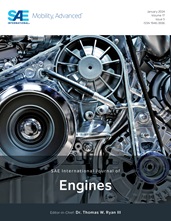Probabilistic Analysis Approach to Evaluate Gear Tooth Strength in the Hypocycloid Engine
- Features
- Content
- This study introduces a probabilistic analysis approach to evaluate the gear tooth strength for the hypocycloid engines, which are particularly significant in internal combustion (IC) engine applications due to their unique design and critical requirements for both efficiency and durability. The research utilizes the stress–strength interference (SSI) theory within a “design for reliability” framework to develop a robust methodology for designing the internal gear mechanism required for the hypocycloid gear mechanism (HGM) engine, in accordance with American Gear Manufacturers Association (AGMA) standard gear rating practices. This approach incorporates probabilistic factors to address variations in HGM component parameters, gear material properties, and engine operational conditions. To validate the design and ensure accuracy, a finite element method (FEM)-based verification is employed, to identify potential failure points and enhance the overall reliability of the HGM engine. The probabilistic analysis results strongly agreed with the FEM results across a range of different HGM engine design versions. A quantitative assessment of the investigated gear pairs showed that the highest reliability is associated with the lowest variation for bending stress number and the largest face width of the gear pair. This comprehensive method ensures that the hypocycloid gear engine meets the high-performance standards required for its effective operation.
- Pages
- 19
- Citation
- ElBahloul, M., Aziz, E., and Chassapis, C., "Probabilistic Analysis Approach to Evaluate Gear Tooth Strength in the Hypocycloid Engine," SAE Int. J. Engines 18(2):263-281, 2025, https://doi.org/10.4271/03-18-02-0015.
